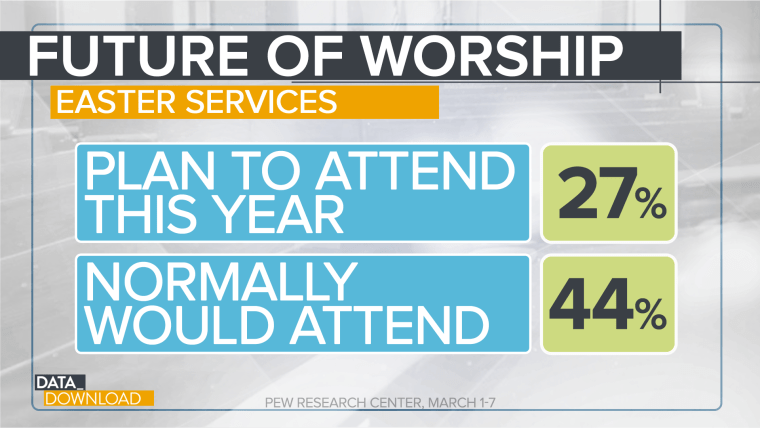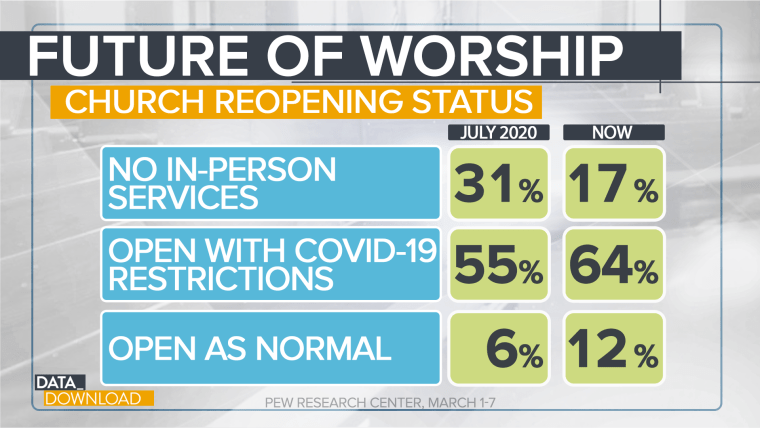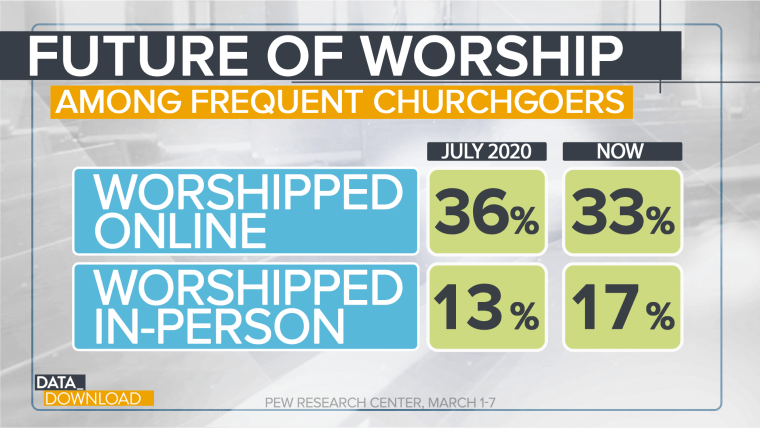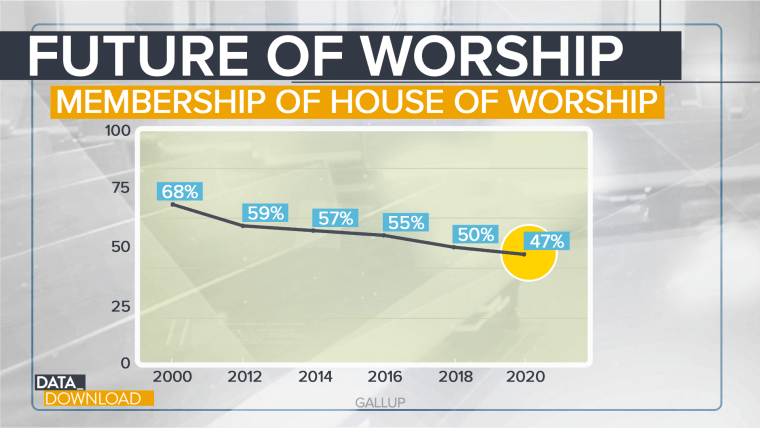WASHINGTON — Today marks the second Easter celebrated in the time of COVID-19 and, vaccinations and optimism aside, things are not yet back to normal in most houses of worship.
Over the past year the pandemic has changed the ways Americans worship and other data shows religious affiliation itself is going through rapid changes. So, on this holy day for Christians, the Data Download takes a look at church-going and faith in America.
Starting with the worship directly tied to today, what do the pews look like this Sunday compared to a normal Easter? They were set to be less crowded than usual, according to data from the Pew Research Center.

The Pew survey taken just a few weeks ago in early March, showed 27 percent of U.S. adults were planning on going to church in person this year. If the year were normal, 44 percent of that group said they would be at services on Easter.
That's a big difference, a 17-point drop, meaning there should be more room for social distancing in most churches this year.
And it’s a reminder of just how strong Covid's grip on the country still is. All Sundays are important for Christians, of course, but Easter is a special case for — one where even less-frequent churchgoers attend. That decline shows there is still a lot of concern among the faithful.
Some of that drop might be less about a desire to attend church than it is about not having a church to physically visit. That same survey asked regular religious service attendees about the current state of their congregations compared July. It found more houses of worship were open, but there were still exceptions and attendance restrictions.

Since July, there's been a decline in the number of churches that have their doors shuttered. It's been roughly halved. But nearly two-thirds of those open churches require some form of Covid-19 restrictions, such as social distancing, meaning fewer seats available.
Only about 1 of every 10 houses of worship are open as normal as of this Easter, according to the Pew data.
Considering those numbers, what have the faithful been doing at their appointed hours of worship? In the last month a lot of them have been worshiping online or with the help of a television.

That's still one-third of adults who have participated in virtual worship from the comfort of their own home in the last month. And, as we contemplate Covid's long-term impact on the country, don't forget the role those virtual or televised services might play in the future of worship in the United States.
This week Gallup released data showing that the number of Americans saying they are a member of a congregation dropped to below 50 percent for the first time ever in 2020.

To be clear, that's not 47 percent of adults saying they believe in God or even 47 percent of adults saying have a religion to which they subscribe. It is 47 percent who say they are members of a specific church.
Taken together, the numbers raise a question. When "virtual services" end and worshippers have to decide whether they physically want to go back to church, what decision will they make? In a sense, it's a form of the same question we are all asking about work and school.
As with other elements of society, we're in a moment of transition. And we’re going to have to wait to see what Covid's long-term impact will be on houses of worship. Next Easter, when we all hope the virus is more fully behind us, we might get a fuller look at the lasting impacts of the pandemic on how we worship.